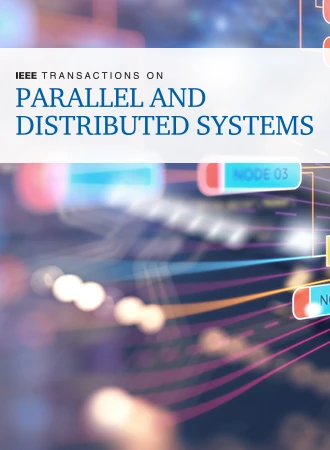米特西:具有多个动态中继链的可扩展分片系统
IF 5.6
2区 计算机科学
Q1 COMPUTER SCIENCE, THEORY & METHODS
IEEE Transactions on Parallel and Distributed Systems
Pub Date : 2024-10-14
DOI:10.1109/TPDS.2024.3480223
引用次数: 0
摘要
分片是解决区块链性能问题的一种普遍方法。为了降低治理复杂性并确保系统安全,一种常见的做法是使用中继链来协调跨分片交易。然而,随着分片和跨分片交易数量的不断增加,单个中继链通常会首先遭遇性能瓶颈,表现出很差的可扩展性,因此中继链的可扩展性对分片系统至关重要。为了解决这个问题,我们提出了 Mitosis,这是第一个通过对中继链本身进行分片来提高中继链可扩展性的多中继架构。我们提出的中继分片算法可动态调整中继数量或优化中继与分片之间的拓扑结构,从而自适应地提高中继链的性能。此外,为了保证多中继架构的安全性,我们设计了一种新的验证器重构方案,并对 Mitosis 进行了全面的安全性分析。通过对两种主流中继链范例的仿真实验,我们证明了Mitosis可以实现高可扩展性,并在中继工作量、中继链吞吐量和事务延迟方面优于最先进的基线。本文章由计算机程序翻译,如有差异,请以英文原文为准。
Mitosis: A Scalable Sharding System Featuring Multiple Dynamic Relay Chains
Sharding is a prevalent approach for addressing performance issues in blockchain. To reduce governance complexities and ensure system security, a common practice involves a relay chain to coordinate cross-shard transactions. However, with a growing number of shards and cross-shard transactions, the single relay chain usually first suffers from performance bottleneck and shows poor scalability, thus making the relay chain's scalability vital for sharding systems. To solve this, we propose
Mitosis
, the first multi-relay architecture to improve the relay chain's scalability by sharding the relay chain itself. Our proposed relay sharding algorithm dynamically adjusts the number of relays or optimizes the topology between relays and shards to adaptively scale up relay chain's performance. Furthermore, to guarantee the security of the multi-relay architecture, a new validator reconfiguration scheme is designed, accompanied by a comprehensive security analysis of
Mitosis
. Through simulation experiments on two mainstream relay chain paradigms, we demonstrate that
Mitosis
can achieve high scalability and outperform state-of-the-art baselines in terms of workload of relays, relay chain throughput, and transaction latency.
求助全文
通过发布文献求助,成功后即可免费获取论文全文。
去求助
来源期刊

IEEE Transactions on Parallel and Distributed Systems
工程技术-工程:电子与电气
CiteScore
11.00
自引率
9.40%
发文量
281
审稿时长
5.6 months
期刊介绍:
IEEE Transactions on Parallel and Distributed Systems (TPDS) is published monthly. It publishes a range of papers, comments on previously published papers, and survey articles that deal with the parallel and distributed systems research areas of current importance to our readers. Particular areas of interest include, but are not limited to:
a) Parallel and distributed algorithms, focusing on topics such as: models of computation; numerical, combinatorial, and data-intensive parallel algorithms, scalability of algorithms and data structures for parallel and distributed systems, communication and synchronization protocols, network algorithms, scheduling, and load balancing.
b) Applications of parallel and distributed computing, including computational and data-enabled science and engineering, big data applications, parallel crowd sourcing, large-scale social network analysis, management of big data, cloud and grid computing, scientific and biomedical applications, mobile computing, and cyber-physical systems.
c) Parallel and distributed architectures, including architectures for instruction-level and thread-level parallelism; design, analysis, implementation, fault resilience and performance measurements of multiple-processor systems; multicore processors, heterogeneous many-core systems; petascale and exascale systems designs; novel big data architectures; special purpose architectures, including graphics processors, signal processors, network processors, media accelerators, and other special purpose processors and accelerators; impact of technology on architecture; network and interconnect architectures; parallel I/O and storage systems; architecture of the memory hierarchy; power-efficient and green computing architectures; dependable architectures; and performance modeling and evaluation.
d) Parallel and distributed software, including parallel and multicore programming languages and compilers, runtime systems, operating systems, Internet computing and web services, resource management including green computing, middleware for grids, clouds, and data centers, libraries, performance modeling and evaluation, parallel programming paradigms, and programming environments and tools.
 求助内容:
求助内容: 应助结果提醒方式:
应助结果提醒方式:


